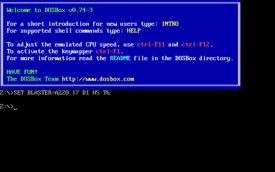
Back مضاه (حوسبة) Arabic Emulyator Azerbaijani Эмуляцыя Byelorussian Емулатор Bulgarian Emulador de codi Catalan Emulátor Czech Emulator Danish Emulator German Imitilo Esperanto Emulador Spanish

In computing, an emulator is hardware or software that enables one computer system (called the host) to behave like another computer system (called the guest). An emulator typically enables the host system to run software or use peripheral devices designed for the guest system. Emulation refers to the ability of a computer program in an electronic device to emulate (or imitate) another program or device.
Many printers, for example, are designed to emulate HP LaserJet printers because so much software is written for HP printers. If a non-HP printer emulates an HP printer, any software written for a real HP printer will also run in the non-HP printer emulation and produce equivalent printing. Since at least the 1990s, many video game enthusiasts and hobbyists have used emulators to play classic arcade games from the 1980s using the games' original 1980s machine code and data, which is interpreted by a current-era system, and to emulate old video game consoles (see video game console emulator).
A hardware emulator is an emulator which takes the form of a hardware device. Examples include the DOS-compatible card installed in some 1990s-era Macintosh computers, such as the Centris 610 or Performa 630, that allowed them to run personal computer (PC) software programs and field-programmable gate array-based hardware emulators. The Church–Turing thesis implies that theoretically, any operating environment can be emulated within any other environment, assuming memory limitations are ignored. However, in practice, it can be quite difficult, particularly when the exact behavior of the system to be emulated is not documented and has to be deduced through reverse engineering. It also says nothing about timing constraints; if the emulator does not perform as quickly as it did using the original hardware, the software inside the emulation may run much more slowly (possibly triggering timer interrupts that alter behavior).
"Can a Commodore 64 emulate MS-DOS?" Yes, it's possible for a [Commodore] 64 to emulate an IBM PC [which uses MS-DOS], in the same sense that it's possible to bail out Lake Michigan with a teaspoon.
— Letter to Compute! and editorial answer, April 1988[1]
- ^ Warick, Mike (April 1988). "MS-DOS Emulation For The 64". Compute!. p. 43. Retrieved 10 November 2013.